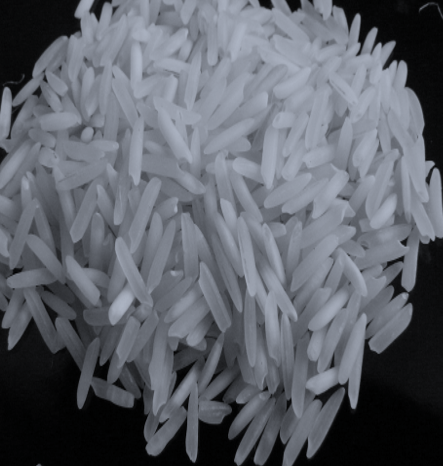
How many documented varieties of Basmati rice are grown in India?
A. 2,00,000
B. 50,000
C. 1000
D. 27
Answer
559.5k+ views
Hint: India is the largest subcontinent to produce the highest number of varieties of traditional basmati rice. It has the highest number of documented varieties of basmati that can be grown in different climatic conditions and has high nutritional value.
Complete answer: Basmati is a slender long-grain aromatic rice which is developed in the Indian subcontinent. It is domestically grown in various parts of India and Pakistan. India accounts for about 70% of basmati rice production. It has a typical pandan-like flavor which is caused by the aroma of a pyroline compound. About 27 varieties are grown in India. These varieties have less cooking time along with the high nutritional value. Some findings have reported that basmati is a hybrid variety of two plants and they have economic and cultural importance. Its history is not well understood. It is an aromatic long-grain rice that is traditionally grown in India and Pakistan. Genome sequencing technology is used to create this hybrid variety. Basmati term is derived from a hindi word meaning fragrance. It is widespread in the Indian subcontinent.

Hence, the correct option is (D), i.e., 27
Note: Plant breeding has developed various hybrid varieties of basmati rice by crossing the traditional varieties of rice with the semi-dwarf plants to produce crop varieties with higher disease resistance and good yield. Each basmati variety is differentiated by grain elongation, fragrance, and alkali content.
Complete answer: Basmati is a slender long-grain aromatic rice which is developed in the Indian subcontinent. It is domestically grown in various parts of India and Pakistan. India accounts for about 70% of basmati rice production. It has a typical pandan-like flavor which is caused by the aroma of a pyroline compound. About 27 varieties are grown in India. These varieties have less cooking time along with the high nutritional value. Some findings have reported that basmati is a hybrid variety of two plants and they have economic and cultural importance. Its history is not well understood. It is an aromatic long-grain rice that is traditionally grown in India and Pakistan. Genome sequencing technology is used to create this hybrid variety. Basmati term is derived from a hindi word meaning fragrance. It is widespread in the Indian subcontinent.

Hence, the correct option is (D), i.e., 27
Note: Plant breeding has developed various hybrid varieties of basmati rice by crossing the traditional varieties of rice with the semi-dwarf plants to produce crop varieties with higher disease resistance and good yield. Each basmati variety is differentiated by grain elongation, fragrance, and alkali content.
Recently Updated Pages
A man running at a speed 5 ms is viewed in the side class 12 physics CBSE

State and explain Hardy Weinbergs Principle class 12 biology CBSE

Which of the following statements is wrong a Amnion class 12 biology CBSE

Two Planoconcave lenses 1 and 2 of glass of refractive class 12 physics CBSE

The compound 2 methyl 2 butene on reaction with NaIO4 class 12 chemistry CBSE

Bacterial cell wall is made up of A Cellulose B Hemicellulose class 12 biology CBSE

Trending doubts
What are the major means of transport Explain each class 12 social science CBSE

Which are the Top 10 Largest Countries of the World?

Draw a labelled sketch of the human eye class 12 physics CBSE

State the principle of an ac generator and explain class 12 physics CBSE

Sketch the electric field lines in case of an electric class 12 physics CBSE

Give 10 examples of unisexual and bisexual flowers




